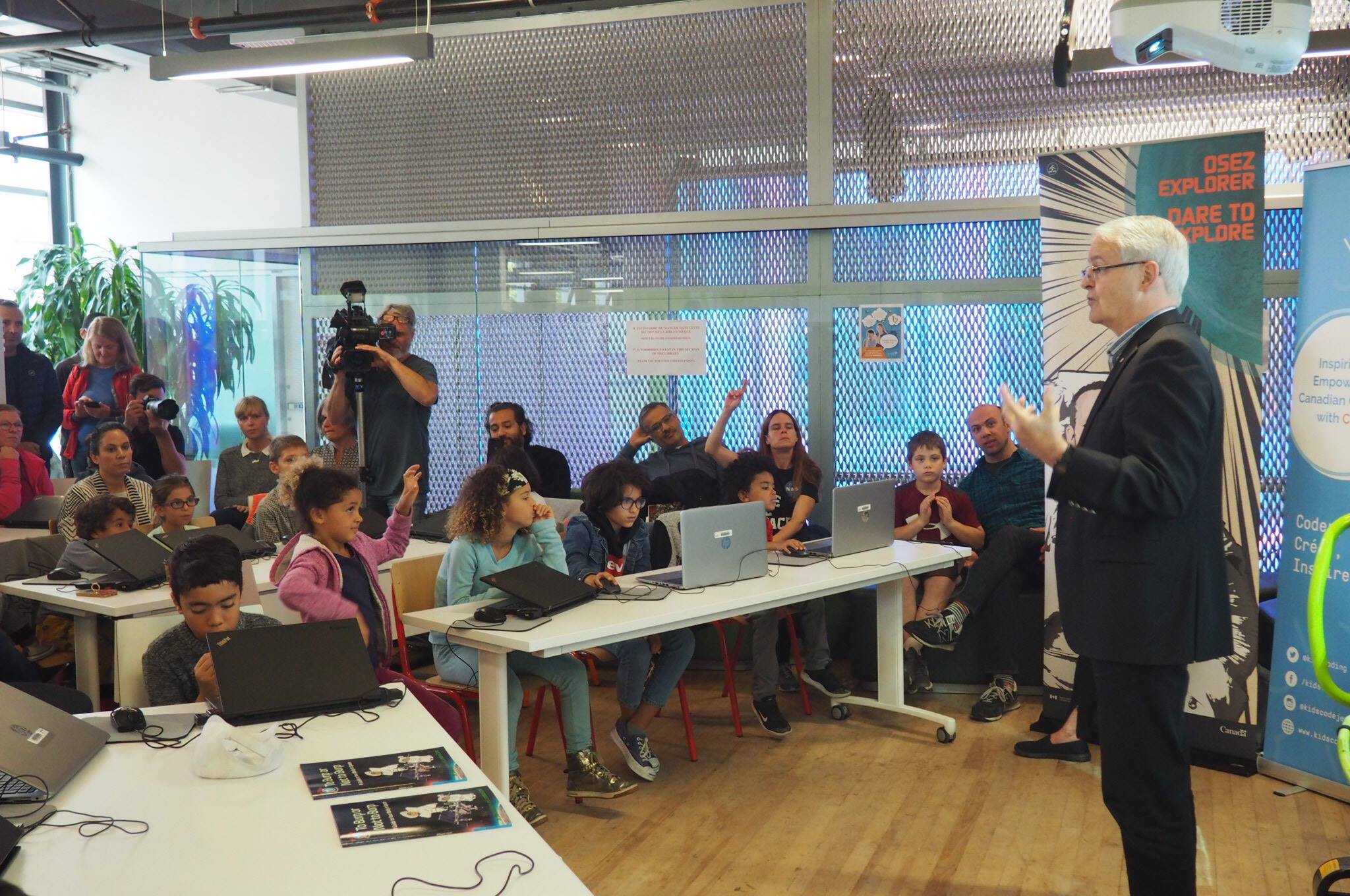Space travel doesn’t normally fall within the purview of the Ministry of Transportation, but, in Oct. 1984, current Minister of Transport Marc Garneau became the first Canadian to view his home from inside a spacecraft. Since his initial trip, Garneau has spent much of his professional life commemorating the unique contributions of Canadians in space.
The federal government’s Science Literacy Week is an annual celebration of outstanding Canadian scientists; this year, as part of the festivities, Garneau was the special guest at a workshop held by Kids Code Jeunesse on Sept. 23. In addition to answering questions on an astronaut’s food and bathroom options in zero gravity—there aren’t many—the Minister sat down with The McGill Tribune to discuss why Canadians should care about space.
When Canada launched Alouette I in 1962, a satellite designed to monitor the Earth’s upper atmosphere, it officially entered the space age behind only the United States and the Soviet Union. Revolutionary for its time, the Canadian technology used for Alouette I was crucial to the Gemini and Apollo missions of the American National Aeronautics and Space Administration (NASA).
“Canada actually built the satellite […], and we asked our neighbours, the Americans, to launch it,” Garneau said. “We agreed to share all of the data […] and, since then, we have pioneered a lot of different areas.”
The Canadian Space Agency (CSA), established in 1989, is the leading voice for space science and exploration in Canada. As President of the CSA from 2001 to 2006, Garneau was integral to strengthening Canada’s voice on the astronomical stage.
“[The CSA] continues to accomplish its main mission, which is to not only […focus on] future projects involving humans, but also the more scientific aspect [where] we put instruments in space,” Garneau said.
For example, OSIRIS-REx is a NASA-headed spacecraft currently hurtling towards an asteroid to take samples; integral to the mission is the CSA-built lidar, an instrument that uses infrared light to measure distances.
“This lidar is going to make a 3D map of the asteroid and that will help establish when [OSIRIS-REx] will go and get a chunk of the asteroid to bring it back to Earth,” Garneau said. “So, we participate in a lot of missions where we contribute instruments that are crucial.”
Canada’s valuable collaborations on non-Canadian missions are important because, in a scientific trade-off, everyone comes away with better data and, ultimately, more knowledge than could be obtained alone.
“We’re going to be on the James Webb space telescope, the successor to the Hubble space telescope,” Garneau said. “When that launches, because we’ve contributed two instruments to it, our astronomers will have the use of this incredible telescope that will help us to learn about the creation of the universe [….] This is exciting stuff, and we want Canadians to have a chance to take part.”
Just as the CSA is a merger of government and science, Garneau himself has become an important figure in both government and scientific communities. Having lead a successful career as an astronaut and engineer before becoming a politician and serving in the current Liberal government as Minister of Transport, Garneau has experienced the advantages of both realms.
“When I was an astronaut and President of the CSA, […] I dealt with the Laws of Physics, [which] you can’t change, you have to work with them,” Garneau said. “When you’re a politician, you’re not working with the Laws of Physics, you’re working with people, and, so, […] your values as a politician come into play. Values don’t come in to play when you’re building space crafts.”
A switch from science to politics might not be immediately intuitive, but Garneau found entering government with a broader perspective to be extremely valuable.
“The way I approach [politics] is helped by my engineering,” Garneau said. “I believe we don’t want to have 338 engineers running the country, but we do want to have more because I think they’re very rigorous and logical which is important [when] creating programs.”









